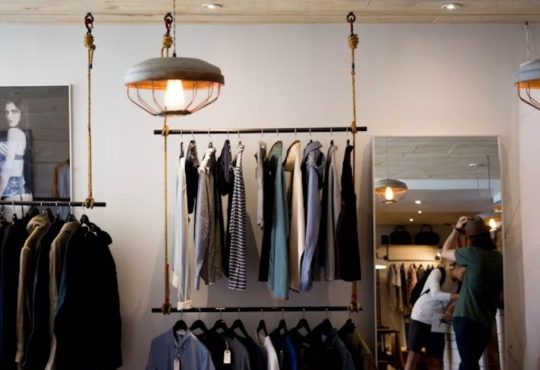“What is ethical fashion, why is it important, and why are we just hearing about it now? Well, to answer these questions, we start with what is wrong with clothing production today. Most clothing available in stores today is produced in an unethical manner using sweatshops and/or child labor to ensure a larger profit margin.
Manufacturers use unsustainable fabrics like non-organic cotton (dubbed natural; it accounts for almost 25% of all pesticide use) and polyester (which is a petroleum by-product). They use conventional dying practices that release chlorine, chromium, and other pollutants into the environment, posing a health risk to farmers, assemblers, and wearers (7 of the top 15 pesticides used on conventional US cotton crops are “possible” to “known” human carcinogens).
The shift to ethical production practices in the clothing industry has been undeniably important for a long time, making the market ripe for a positive change. Consumers are starting to demand better.
What is ethical fashion?
Ethical fashion is that which is produced using: fairly-paid and fairly-treated adult workers; sustainable fabrics and materials like organic cotton, hemp, bamboo, and reclaimed or recycled materials; low-impact fiber-reactive dyes or vegetable dyes; respect for a healthy environment and/or product for the farmer, the assembler, and the wearer of the clothing.
Why ethical fashion?
We are all responsible for how our own lifestyles affect the environment. Simple measures can be taken to achieve big changes by simply switching our buying patterns to include products made of low-impact materials. Positive pressure on businesses that have yet to voluntarily clean up their acts is very easily applied by simply choosing not to spend money on their products and helping, little by little, to grow the businesses that have made an explicit commitment to responsible business practice.
Why Now?
The wonderful thing about the booming ethical fashion industry is the huge variety of designs, colors, cuts, fabrics, and sizes now available. Long stigmatized as a cousin to the burlap sack, the ethical offerings today are design-oriented. Designers with hearts are creating beautiful, sexy, edgy, classic, current, imaginative, and, yes, flattering pieces; ethics will simply not be compromised, and thankfully neither will the look and feel of their work. Reducing our footprint can be done without making any sacrifices.
One of the main driving forces behind the ethical fashion boom is public awareness. Thanks to exposure to large manufacturers, the fact that sweatshop labor is used for the overwhelming majority of production can no longer be ignored. The power of boycotting has been demonstrated, as has the power of voting with our dollars to support good practices.
Thanks to accessible work like “An Inconvenient Truth,” the layperson is no longer free to assuage their environmental guilt with the denial of the existence of climate change. Thanks to alternative medical practitioners who deal with causes instead of just symptoms, we’re learning that we can build health by surrounding ourselves with and consuming healthy things.
Consumers are growing weary of quantity without a quality mentality. Most designers with an ethical bent to their art work in small batches, producing high-quality goods with exceptional fabrics. Consumers are, in growing numbers, appreciating the right to vote with their dollars and are exercising it to support the expansion of the sustainable textile industry, small farmers, and farm cooperatives.
We’re all looking for ways to reduce our environmental impact, increase our social contribution, ease our consciences, hold on to some creature comforts, and continue celebrating art in all its forms.”





